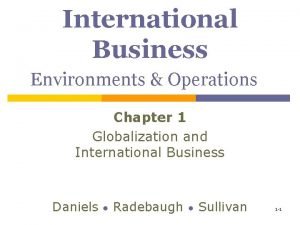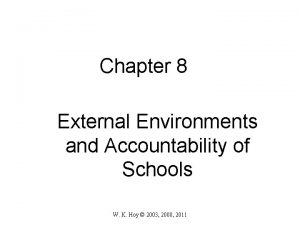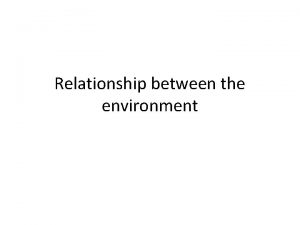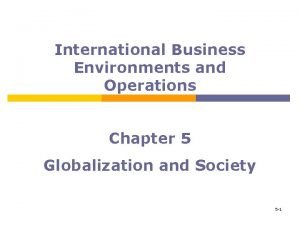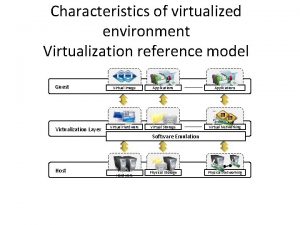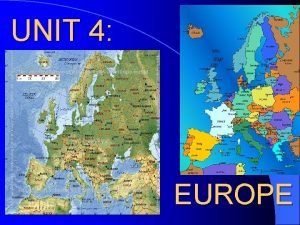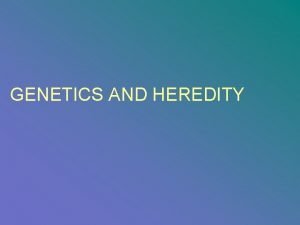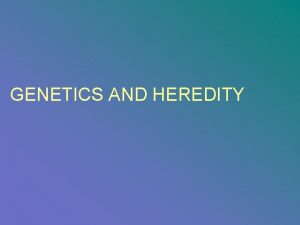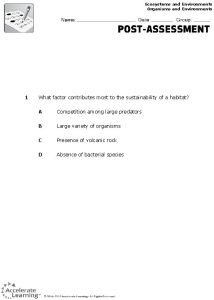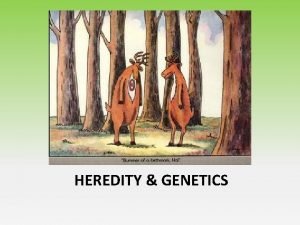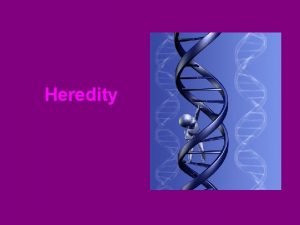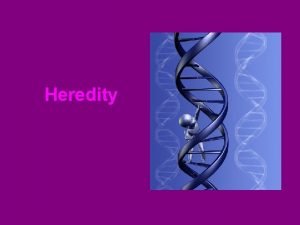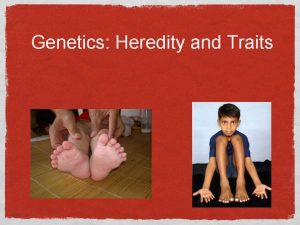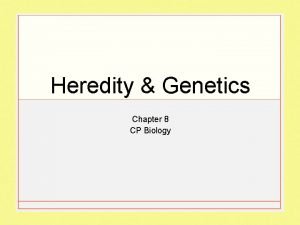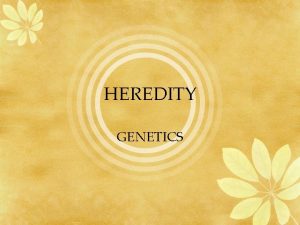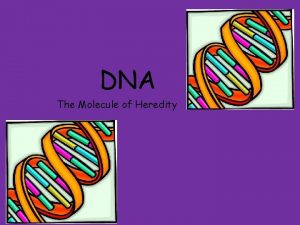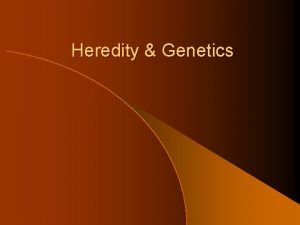Heredity Organisms and Environments 1 Heredity is the













- Slides: 13

Heredity Organisms and Environments 1 Heredity is the passage of what from parent to offspring? A Genetic material B Oxygenated blood C Digestive enzymes D Connective tissue

Heredity Organisms and Environments 2 A gene is best described as A the release of energy. B a unit of heredity. C the waste produced by cells. D a collection of adaptations.

Heredity Organisms and Environments 3 The inherited traits of an organism are governed by A leukocytes. B genes. C cytoplasm. D enzymes.

Heredity Organisms and Environments 4 The hereditary information in animal and plant cells is located on the chromosomes, which the cells store in the A vacuoles. B nucleus. C cytoplasm. D ribosomes.

Heredity Organisms and Environments 5 What structure in a cell contains the genetic information? A Lysosome B Ribosome C Nucleus D Mitochondria 5

Heredity Organisms and Environments 6 Recessive genes are expressed under which of the following conditions? A Every time they are found in an organism. B In green plants that reproduce through seeds. C When asexual organisms produce a pair of offspring. D Only in the absence of dominant genes for the same trait.

Heredity Organisms and Environments 7 Heredity defines the passage of genetic material from A parent to child. B sibling to sibling. C mate to mate. D predator to prey.

Heredity Organisms and Environments 8 Recessive traits are expressed – A in one quarter of all offspring produced. B always, in all members of the population. C only when the dominant gene is not present. D if the trait is carried by the male parent.

Heredity Organisms and Environments 9 A gene can be best described as a unit of A metabolism. B circulation. C heredity. D digestion.

Heredity Organisms and Environments 10 Genetic material is primarily responsible for – A removing cell waste. B governing inherited traits. C creating new enzymes. D participating in digestion.

Heredity Organisms and Environments 11 Heredity is best described as the A passage of genetic information from one generation to the next. B movement of nutrients through the digestive system. C creation of new blood cells to replace old blood cells. D removal of waste products from processes within each cell.

Heredity Organisms and Environments 12 On what structures are genes located? A Chromosomes B Lysosomes C Ribosomes D Golgi bodies

Heredity Organisms and Environments 13 Which of the following statements accurately denotes the frequency of expression of dominant and recessive traits? A Dominant traits = always / Recessive = never B Dominant traits = never / Recessive = sometimes C Dominant traits = always / Recessive = sometimes D Dominant traits = sometimes / Recessive = sometimes
 Unicellular and multicellular organisms
Unicellular and multicellular organisms Member of the same species
Member of the same species International business environments and operations
International business environments and operations External environment and accountability of schools
External environment and accountability of schools Every agent is rational in an unobservable environment.
Every agent is rational in an unobservable environment. The relationship between micro market and macro environment
The relationship between micro market and macro environment International business environments and operations
International business environments and operations International business environments and operations
International business environments and operations Exercise in hot and cold environments
Exercise in hot and cold environments International business environments and operations
International business environments and operations Characteristics of virtualized environments
Characteristics of virtualized environments Business environment objectives
Business environment objectives Chapter 13 natural environments of europe
Chapter 13 natural environments of europe Stable prediction across unknown environments
Stable prediction across unknown environments


